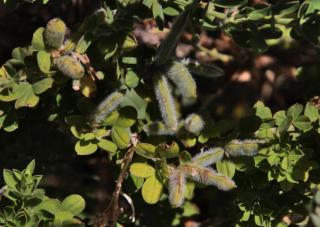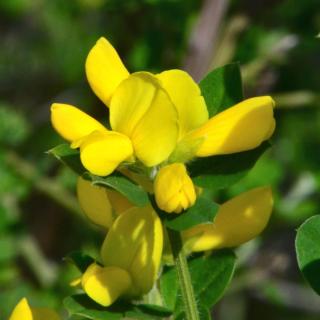

French broom is a fantastic shrub with yellow flowers that blooms in spring.
Key French broom facts
Name – Genista monspessulana
Formerly – Cytisus monspessulanus
Family – Fabaceae
Type – shrub
Height – 6 ½ feet (2 meters)
Exposure – full sun
Soil – ordinary, rather sandy
Foliage – deciduous
Flowering – April to June
Invasive risk – high risk
Easy to care for, the planting and pruning contribute towards increasing growth and blooming of French broom. Note that in North America, French broom is regulated as an invasive weed, so consider these alternatives instead.
If purchased in a container, French broom can equally be planted in fall or spring, as long as it doesn’t freeze.
But as is the case for most shrubs, planting it during the month of November is when you’ll best ensure that it settles in perfectly.
If you must plant your French broom in spring, provide for regular watering over the first summer.

However, each shrub produces thousands of seeds every year. These germinate easily when they’re given lots of light. It’s actually what makes this shrub so invasive.
French broom is a shrub that is easy and only requires very little care, both for pruning and for watering.
It is preferable to not prune it too early after planting, so that it may quickly grow into its natural shape.
In the subsequent years, prune the sprigs of the year on the French broom after the blooming more or less by half.
You can also reshape your French broom to a nice shape just after the blooming.
As regards watering, the first year is the only year where regular watering is needed.
 This shrub bears flowers abundantly and it is very colorful, a real ball of fiery gold for the most part of spring.
This shrub bears flowers abundantly and it is very colorful, a real ball of fiery gold for the most part of spring.
Its growth is relatively fast and it adapts well to most soil and climate types. French brooms only live for a few years, 5 at most, which means they must be replaced after this span of time.
You can also propagate it after 2-3 years by preparing cuttings, which is a great way to replace the mother plant regularly.
Very hardy to freezing and cold, rest assured that it won’t suffer in any way even when temperatures drop to 5°F (-15°C).
On top of being invasive, you should know that French broom actually fuels forest fires! Indeed, part of this plant’s strategy is to help fires wipe native plants out. The somewhat fire-resistant seeds can then sprout and conquer the land! Don’t plant this near your house if the area is prone to drought and fire hazards.
Read also:
In order to protect roots from the cold in winter, go natural and mulch the foot of the tree with plant-based mulch.
The sprigs collected during the pruning are used to make brooms.
I have a hedge of Broom, in France, which is not at all invasive, it does not spread at all, or, at least, very slowly. Also the plants are old, certainly more than 15 years
French broom is one of the most invasive fire prone plants in California (non native) Please take this article down. It is misinformation and causing more harm to our environment than ever.
Hi Patricia, I’m sorry it took me nearly a month to respond. I gathered the information I needed to help make things crystal-clear for readers. After all, this website is aimed at readers across the planet, so what’s invasive on one continent is native to another… French broom was originally written for the UK/Europe readers as an answer to a question a reader from there had. I now amended the article to include notes of caution about invasiveness, and even focused on the invasive status of French broom (and that of scotch broom) in the USA. That way, it won’t deter Europeans from planting this beautiful shrub. As you say, it is definitely a weed along the US West Coast, which I hope these articles make clear. Thanks a lot for your feedback, it really helps focus work to make it better and more useful and relevant.
Please make your notes of caution more emphatic for Californians! It would also be quite helpful to include a prominent link to getting rid of it: https://ipm.ucanr.edu/PMG/PESTNOTES/pn74147.html The caution should be just as prominent as your glowing review. Our mega drought state is on fire! French broom is ruining our redwood forest environments and crowding out native under-story plants!